|
Home | About MIAS.Aero | Articles and Publications | Airforces Overview | Projects | Links | Contact | UKRAINIAN ARMY AVIATION: 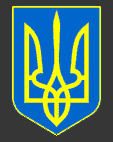 In the beginning of 1992, Ukraine Army Aviation could rely on some 9 regiments and seven helicopter squadrons subordinated to 5 Armies, distributed over 3 Military Districts (MD) - Kiev, Odessa and Carpathian MD. Thirteen years after gaining its independence and following numerous restructuring programs aimed at creating a leaner and meaner organization, three Brigades of Army Aviation remain, while important new missions have been added to their normal task of national defence. Most evident is the vital role Ukraine Army Aviation plays in many international peacekeeping missions providing logistical support and airborne policing capacity around the globe. A clear example is Ukraine's large contingent contributing largely to the United Nations ever increasing effectiveness in monitoring and bringing peace to the many wary regions of Africa. As such, Ukraine is well on its way adapting itself to the new world status quo showing clear evidence to play an active role in it. 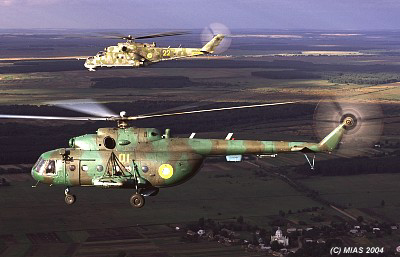
After the dissolution of the Soviet Union and declaration of independence in 1991, Ukraine inherited one of the most powerful Armed Forces in Europe. On 24 August 1991, the Verkhovna Rada (Parliament) of Ukraine adopted the resolution to take under its jurisdiction all military units of the former Soviet Armed Forces then situated on the territory of Ukraine and about the establishment of the Ministry of Defence of Ukraine. At that time, the Armed Forces of Ukraine included about 780.000 personnel, 6.500 tanks, some 7.000 combat armoured vehicles, 1.500 combat aircrafts, more than 350 ships, 1.272 strategic nuclear warheads of intercontinental ballistic missiles (ICBM), and 2.500 tactical nuclear missiles. 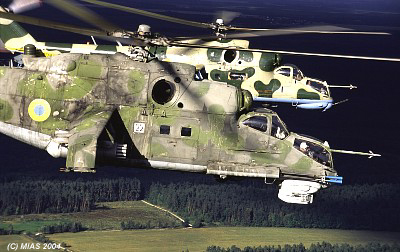
Soon after Ukraine's independence in 1991, relations between Ukraine and NATO began to develop and it was as early as January 1992 when a representative of Ukraine for the first time took part in the Working Group of the North Atlantic Cooperation Council (NACC). Shortly after, in the period between January-March 1992, all servicemen and reservists had to swear once more their allegiance, but now to Ukraine. According to official data, between the creation of the Ukrainian Armed Forces in 1991 and 1994, some 12.000 officers moved out of Ukraine to other countries and more than 33.000 personnel returned to Ukraine. 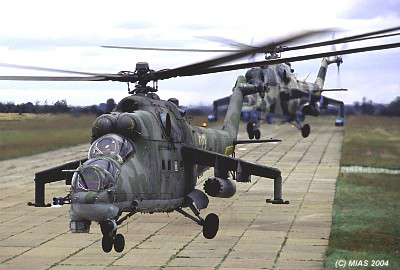
On 8 February 1994, Ukraine was the first country within the Commonwealth of Independent States (CIS) to sign NATO's Partnership for Peace Program (PfP) Framework Document. Major restructuring followed and at the end of 1996, more than 3.500 different military institutions were closed and 410.000 personnel were discharged. Also, the number of armament and defence technologies was decreased significantly resulting in the number of combat aircrafts being lowered by 600 units, helicopters by 250, the fleet of tanks and combat-armed vehicles by 2.400 and 2.000 respectively. 
Shortly after in 1996, in accordance with the related Presidential Decree, the so-called 'State Program for the Armed Forces Development until 2005' was developed. It was created to determine priorities in the development of a national Armed Force, while balancing goals, organization and strength with the potential military threats to Ukraine's national security and economic capability. It not only deals with strength reduction, but also with re- organization and improvement of all organizational and functional elements. 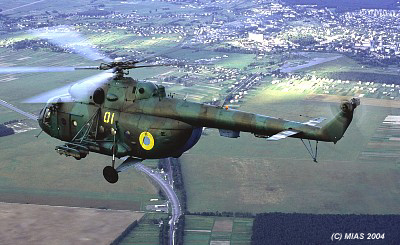
Before the end of 2005, the aim of this Program is to have the total strength of the Ukrainian Armed Forces further reduced to 375.000 of which 295.000 are military personnel. A further 22.000 military personnel will be replaced by civilians. It has been decided to reduce five aviation divisions, to reform five mechanized divisions into four separate mechanized brigades and one storage base of armament and military vehicles. It is also planned to withdraw 400 tanks, 289 aircraft, 189 helicopters, 11 ships and vessels of various classes from the inventory. The costs and expenses from maintaining this equipment (more than 100 million hryvnia annually) will be spent on updating advanced weapons and military equipment. 
The State Program furthermore envisions the establishment of a Rapid Reaction Corps within the Ground Forces by late 2005, as well as a Aviation Group in the Air Force and a Combined Squadron in the Navy, capable to operate both independently and in a combined formation, under a unified command and in close cooperation with each other. Until now, the Ukrainian government was oriented at North Atlantic integration and the restructuring and development of the Armed Forces had to be viewed in the context of planned reduction of the army's numerical strength and this integration. 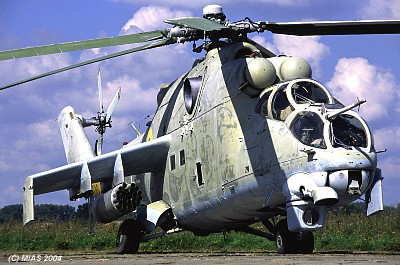
This process started when on 9 July 1997 at the Madrid Summit the President of Ukraine L.D.Kuchma signed the NATO-Ukraine Special Partnership Charter, which determines political commitments of both sides on the highest level and explains the content of "special partnership" between NATO and Ukraine. In line with this on 23 April 1999 the NATO Liaison Office (NLO) was opened in Kyiv to further strengthen the partnership. 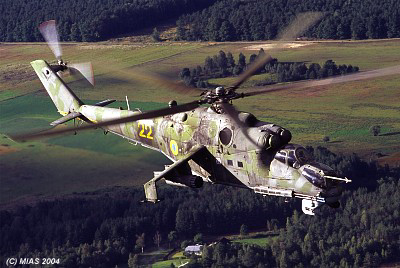
To date, Ukraine maintains its non-nuclear and neutral status, while in the meanwhile it remains strongly committed to support efforts to ensure peace and stability in the Euro-Atlantic area and in the United Nations designated mission countries. ARMY AVIATIONIn the beginning of 1992, Army Aviation could rely on some 9 regiments and seven helicopter squadrons subordinated to 5 Armies, these then distributed over 3 Military Districts (MD) - Kiev, Odessa and Carpathian MD. Just before Ukraine declared its independence, the Soviets transferred most of its combat, combat transport and transport helicopter previously operated by the Voyenno Vozdushniye Sily (air force) to the Army. A move that was reversed by the Russian Federation in 2003, but in Ukraine currently all helicopters are operated the Army Aviation, except for those operated by the air academy at Kharkov, some staff helicopters attached to the Air Force headquarters in Vinnitsa and the special mission helicopters like the Mi-8PPA (Hip K) which are all operated by the air force. 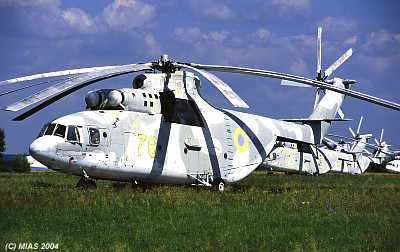
The process of reformation of the Armed Forces as laid down in the State Program will have its affect on all parts of the Army. The main task of reformation and development of the Army is the creation of combat ready and combat effective units, equipped with modern types of weapons and military vehicles, ready to accomplish its nowadays tasks. The most peculiar feature of this process will be the transition from a division-regiment to a brigade-battalion type of structure, which will allow the formations and units to increase their autonomy, mobility, and fire and strike power. 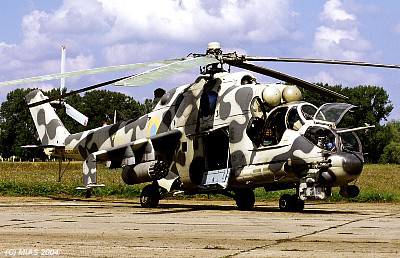
For the Army Aviation it implies a similar structural reorganization, implying the transformation to the Brigade structure, each operating two squadrons of the mixed type (each equipped with a combination of Hips and Hinds), while upholding the Conventional Forces Europe (CFE) treaty limiting Ukraine the total number of attack helicopters to 330. CURRENT FORCEToday, the Ukrainian army is organized in three Operational Commands (OC), being the Western OC with its headquarter in Lviv, Southern OC (HQ in Odessa) and Northern OC (HQ in Chernihiv), whereby only the Western and Southern commands maintain helicopter assets. The majority of helicopters resort under the Western Operational Command having two helicopter brigades at its disposal. 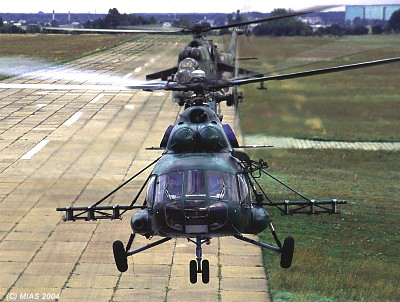
The biggest brigade of these two is 7th Separate Brigade of Army Aviation, which has its base at Novi Kaliniv, near a small village of the same name located some 80 kilometres south west of Lviv. Although the nearby village is small in size, some 5.000 people reside in the housing complex adjacent to the base (and away from the village), which has its own primary school, supermarket etc. In its totality, the brigade covers an area of some 360 hectares. On the 1st of April 2004, the unit celebrated its 50th anniversary, originally being an air transport regiment at Nezhin air base equipped with the Li-2 (Douglas DC-3) aircraft. In 1955 the unit transitioned to operate its first helicopters in the form of the Mi-4 and Mi-6. The Mi-8 Hip entered service in 1970 and in 1986 the unit received the first Mi-26 Halos. In 1991 the unit provided its helicopters to fight the Chernobyl reactor fire set by the explosion of the nuclear power plant, losing many of its crews in the aftermath. In 1995 and 1996 the unit provided Mi-26s to Zagreb followed by Mi-24 and Mi-8s to Croatia as part of Ukraine's peacekeeping contribution to the United Nations. During 1996 and 1997 the unit Hips and Hinds once more were active in East Slovenia while during the period 1999 and 2001 Mi-8s were based in Kosovo. 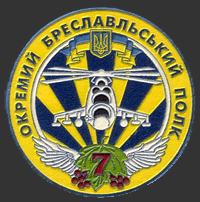
Until 1989 an attack regiment of Su-25 Frogfoots was based at Novi Kaliniv alongside a single mixed helicopter regiment. Upon the withdrawal of the Soviet troops in Afghanistan, one of the war beaten regiments, the 335th OBVP of the Russian Army Aviation previously based at Gazni, Afghanistan, returned to the motherland and was relocated to Novi Kaliniv. Today only the 7th Brigade remains, but the remnants of the two helicopter regiments previously operating from the base are still evident. Although the brigade officially has some 48 helicopters on strength, a total of 89 helicopters currently reside on the base.Although not all active, the actual composition of the Brigade is typical in its diversity as it has 6 Mi-24V's (Hind E), 15 canon equipped Mi-24P's (Hind F), 3 Mi-24RChR's (Hind G1) specially modified for Nuclear Biological & Chemical (NBC) warfare analysis and 7 Mi-24K's (Hind G2) for battlefield reconnaissance and artillery fire correction. 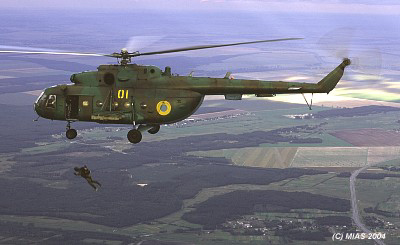
The unit also operates 3 of the unique Mi-24VP's (Izdelie 258) with the twin-barrel 23 mm nose gun, in place of four-barrel 12.7 mm gun. They are operated alongside 26 Mi-8T's, 3 Mi-8MT's, 4 Mi-8MTV-2's, 6 Mi-9's airborne command posts as well as 16 Mi-26 heavy-lift helicopters (Halo). Around 1996 the last Mi-6 Hooks were pahsed out. The Mi-24D Hind D is no longer in use in any of the remaining brigades in Ukraine. 
Today the brigade incorporates two helicopter squadrons, whereby both operate a mixture of Hips and Hinds of different sub-types, while only the 1st squadron operates all but two of the remaining Mi-26 Halos in Ukrainian Army service. The brigade has a total of 70 crews, composed of a pilot, co-pilot and engineer and the brigade receives between 6 to 10 new pilots every year. 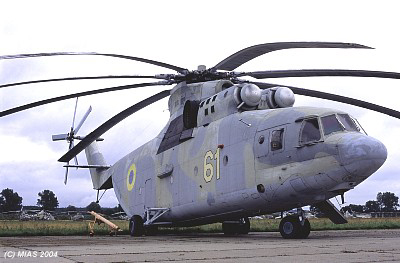
At the Academy, based on the outcome of the psychological and physical tests, young recruits are immediately separated to fly fixed wing or helicopters. Pilot training takes about 4 years whereby the first year is oriented at theory only. Depending the capability of the student pilot, between 100 and 200 flight hours are logged while at the Academy before the young graduate moves to the assigned unit. Then at the brigade level they fly (depending their skills) 2 to 3 years as a co-pilot before they move on as a commander pilot. The 2nd Helicopter Squadron of 7th Helicopter Brigade is the designated Army Aviation unit to work within Partnership for Peace (PfP) framework agreement. Together with other elements of the Ukrainian Armed Forced the squadron trains in PfP exercises, to reach interoperability with NATO military formations and as such is prepared when called upon to participate in NATO-led Peace Keeping Operations (PKO). Currently the brigade has some 100 officers active in United Nations operations. BRODYThe base of the 3rd Separate Brigade of Army Aviation is located some 12 kilometres north of the ancient city of Brody, while the brigade headquarter is located in the city itself. The airfield retains a small west-east orientated runway and old style revetments, previously in use by Il-2 Sturmoviks during the 2nd World War and shortly after. The current regiment was formed as recent as 1995 when the 119 Separate Helicopter Regiment still reported to the 38 Army Corps and on 16 November 1995 the unit started to carry out its flight operations. On 26 August 2004 the regiment was reformed and named 3rd Separate Helicopter Brigade of Army Aviation reporting directly to the Commander of Army Aviation of the Western Operational Command and the unit has some 700 people attached to it. As with the brigade at Novi Kalinov, many of the senior officers in service have seen real combat action in Afghanistan and/or have served in different units located in the former German Democratic Republic (DDR) and as such bring a lot of experience to the table. 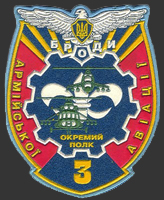
Today's main tasks of the unit is to train the helicopter crews for peacekeeping and rescue operations, while in addition transport personnel and cargo and execute VIP flights for the army commanders. The 3rd Brigade also maintains two Mi-24 Hinds on permanent alert (day missions only) for anti-aircraft defence, receiving orders from the Air Defence section of the Air Force in case low speed/low altitude aircraft would illegally pass the border. When the occasion would arise they would need to intercept and target the aircraft with their guns. Providing support to the surrounding civil population, one specially fitted Mi-8 stands on an all- weather 24-hour SAR alert and has an action radius of 250km. The unit was geared up to send Helicopters in support of the Ukrainian forces in Iraq but to date this did not materialise and as it is most likely that the Ukrainian contribution to the Coalition Forces in the country is to be retrieved, it probably will never happen. 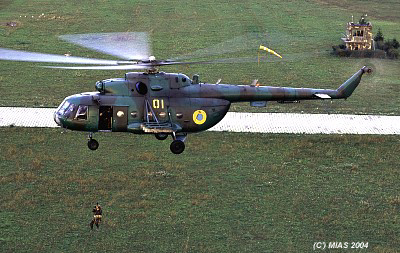
Elements of the 3rd Brigade are part of the newly created Rapid Reaction Force allowing the flight-crews to fly additional hours. Currently flight crews not assigned to UN operations abroad fly between 50 and 80 hours annually, while those send out on a mission accumulate in average between 100 and 250 hours of flight time. Life air-to-ground firing is practised on a regular basis at the Kaminkubuska Air Force shooting range nearby keeping the unit combat proficiency high. Furthermore regular shooting camps are organised across the country where the Brodi delegation together with those of other Brigades are gathered for a two weeks life firing exercise in the field operating a mix of Hips and Hinds. 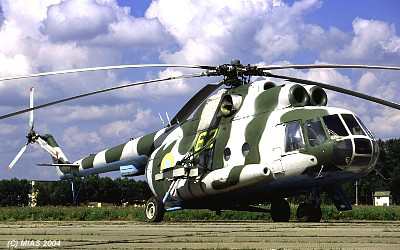
In the past Brody played an important role being located relatively central in the former USSR, when containerised helicopters were transported from the main factory to Brody by train to be locally assembled, test-flown and distributed among the many helicopter regiments and squadrons in the western part of the Soviet Union. In contrast to this past, today Brody besides housing two operational squadrons, plays another role as opposite to the helicopter base is located a separate compound responsible for the collection and destruction of surplus helicopters, mainly older Mi-24D's and Mi-8T's. Currently some 55 Hinds and 21 Hips are gathered with their rotor blades removed awaiting their destruction. 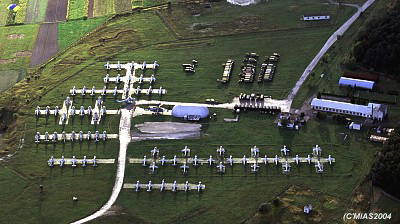
As with the other two Brigades, maintenance is done at 6, 12 and 24-month intervals at the unit level. For overhaul and upgrades, helicopters are send to the Konotop Aviation Repair Plant "Aviokon" (formerly 57th Repair base), a state-run Ministry of Defence plant in the north of the country. Currently the Ministry of Defence is studying the possible procurement of some Mi-171 helicopters and upgrading a limited number of low-hour Hips for night operation capabilities. PEACEKEEPINGToday Ukraine is one of the leading troop-contributors to the United Nations (UN) peacekeeping activities providing military and civilian personnel to operations around the globe. Previously Ukraine already made significant contributions to NATO's peacekeeping activities in the Balkan. Ukraine's decision to actively take part in peacekeeping operations took place when its parliament in July of 1992 adopted a resolution on the participation of its Armed Forces in UN Peacekeeping Forces in conflict zones on the territory of Former Republic of Yugoslavia. Since 1992, Ukraine participated in operations like UNPROFOR, SFOR and IFOR and in countries like Croatia, Eastern Slovenia, Kosovo, Moldova, Macedonia, Afghanistan, Tajikistan, Georgia, Lebanon, Guatemala, Angola, Congo, Ethiopia and Eritrea, Liberia and Sierra Leone. 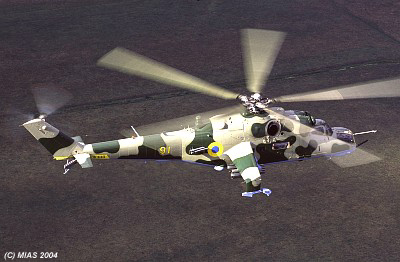
In 1993 the Ukrainian Army Aviation was called into action to take part in the operation to evacuate the refugees out of the conflict zone in Georgia-Abkhazia. Ukraine's contribution to NATO peacekeeping activities in the Balkans started in 1996 when Ukraine deployed an infantry battalion of 550 soldiers to work alongside NATO member and partner countries in Bosnia and Herzegovina in the framework of the NATO-led Implementation Force (IFOR). Ukraine later also took part in the Stabilisation Force (SFOR). Ukraine continued to provide a significant number of its forces to international peacekeeping activities for the NATO-led force in Kosovo (KFOR) and by sending a mechanised company and a helicopter squadron. From September 1999 onwards, 14th Helicopter Squadron participated in the operation in Kosovo with some four Mi-8 helicopters executing a total of 5.640 missions accumulating some 2.990 hours transporting 20.500 passengers and 198.000 kg. of cargo. In July 2000, the newly created Polish-Ukrainian battalion was deployed to the region and continues to make a significant contribution to the NATO-led peacekeeping operation in Kosovo. 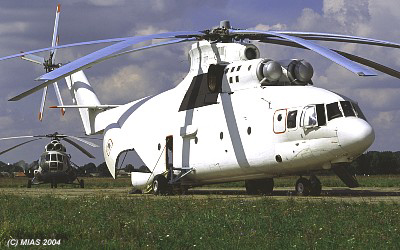
From 1992-1995 Ukraine took part in UNPROFOR (United Nations Protection Force) in former Yugoslavia, sending two battalions (60th and 240th Special Battalion) tasked with convoying cargo with relief goods, stopping combat actions and to patrol the zones of responsibilities. Here the 15th Independent Helicopter Squadron provided rotary support in the form of three Mi-8 helicopters and two Mi-24's. During September-December 1995, the Ukrainian UNPROFOR peacekeeping units were repatriated from former Yugoslavia. From 29 March 1996 onwards, 17th Independent Helicopter Squadron served during the UN mission in Eastern Slovenia (UNTAES) being replaced on 10 April 1996 by the 8th Independent Helicopter Squadron until January 1998. Here the main tasks were to observe the implementation of agreements about transferring the authority under the control of UN administration, to patrol the zones of responsibilities, to transport the UN personnel and to convoy the humanitarian cargos. More than 1.000 servicemen of the Armed Forces of Ukraine took part in the UN mission to Eastern Slovenia. 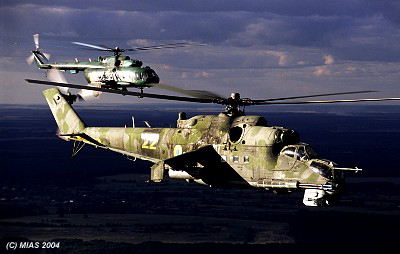
At the present, more than 17.000 servicemen of the Armed Forces of Ukraine took part in peacekeeping operations all over the world and in many of these operations the Army Aviation plays a vital role performing tasks as transportation, delivery of medical or food aid, VIP transport, medical evacuation (Medevac) or border patrol. PREPARING FOR PEACE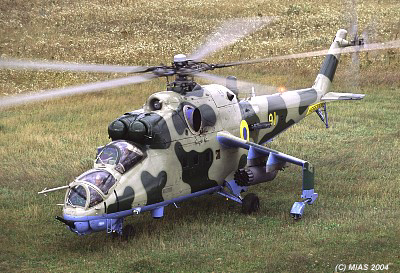
Before being sent to this kind of mission's, people and equipment need to be adapted to the often very different circumstances. All participants therefore take a special course prior to be send out to an UN mission. This takes place 3 months in advance and includes additional training for the crews and physiological preparation. UN requirement dictate that helicopter commanders need a minimum of 1.000 hrs while the co-pilot needs to have an experience of at least 100 flight-hours. Further criteria are laid down in an agreement between UN and Ukraine. The UN checks and tests the crews not prior to their departure to the UN mission but on location. Specific modifications to the helicopters are carried out to meet the UN standards: these include the fitting of a transponder, additional radios and GPS. All these modifications are made at brigade depot level. Most of the Ukrainian army Hips assigned to UN missions also have additional nose weather radar fitted and additional external fuel tank attached to the port side. 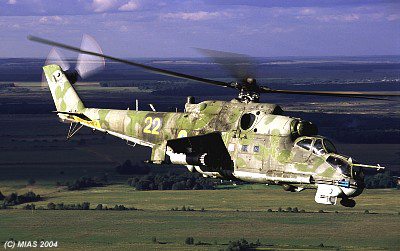
Due to the difficult conditions in Africa, for safety reasons the helicopters are replaced once every year. The helicopters are transported to and from Africa by An-124. On average, each pilot accumulates about 300 hours per 6 months, which is also the maximum length of the tour. UNITED NATIONS MISSION IN AFRICAThe aim of the peacekeeping United Nation mission to Sierra Leone was to implement the Lomé Peace Agreement and to assist in the implementation of the disarmament, demobilization and reintegration plan. The Peacemaking contingent of the Armed Forces of Ukraine in Sierra Leone started in December 2000 and its contribution consisted of the 4th separate repair battalion and the 20th separate helicopters unit of the Ukrainian Army Aviation. This detachment operates alongside a Pakistani Army helicopter unit. The 4th separate repair battalion of the Armed Forces of Ukraine located at Lungi airport and Hastings carries out tasks in UN Mission to Sierra Leone with 524 servicemen. The tasks included maintenance and repair of military cars, trucks and trailers, training of the armoured troop-carrier crews and trucks drivers and provide escort of humanitarian cargoes. 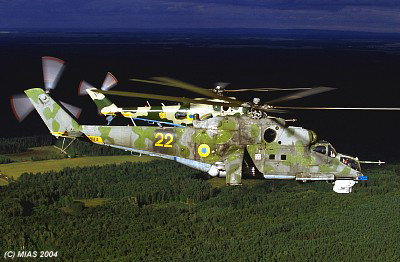
Since March 12, 2001 four Mi-8 Hips of the 20th separate helicopters unit of the Armed Forces of Ukraine carried out tasks in UN Mission to Sierra Leone. Based at Hastings airport (20 km southeast of the capital Freetown), the Ukraine Aviation unit is commanded by Lieutenant Colonel Taras Shliukharchule and is made up by 110 servicemen of which 57 are officers. The unit's has since the inception successfully accomplished several medical evacuations, search and rescue operations and movement of personnel and cargo in about 13,500 flights and 6,000 hours. The Russians joined the Ukrainians when on 24 April 2004 four Russian Mi-24 Hind gunships arrived in Sierra Leone, together with one hundred and ten officers and warrant officers. 
On 27th August 2004, UNAMSIL Force Commander Major General Sajjad Akram honoured all the members of the Ukraine Aviation Unit when they were conferred with the UN medal of honour for their outstanding performance since the arrival of the unit in 2001. Following the developments in neighbouring Liberia the United Nation scope of attention gradually has started to shift to the south and in the advent of UNAMSIL dwindling down in size, an important mission the Ukraine Aviation Unit to be executed was "Operation Blue vigilance 5" wherein the unit was tasked with carrying out deterrent flights along the country's borders with Guinea and Liberia to prevent the cross-border activities to take place. 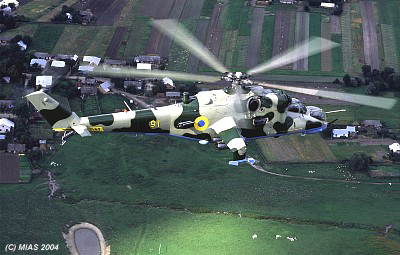
Ukraine's mission in Sierra Leone ended in October/November 2004 and many of the crews and ground personnel have moved to Liberia, forming the 56th separate helicopters unit contributing to the United Nations Mission in Liberia (UNMIL), a mission which is about to become the world's largest United Nations peacekeeping mission in history. To date a total of 15,632 uniformed personnel, including 14,337 troops and 198 military observers, 1,097 civilian police supported by 475 international civilian personnel and 565 local staff is present in Liberia. Ukraine contributes with 320 personnel and the contingent is stationed at Roberts International Airport, Monrovia in Liberia, operating some twelve helicopters being eight Mi-8's and four Mi-24 Hinds. In February of this year, helicopter gun-ships attached to the UN peacekeeping force in Liberia have begun regular patrols of the country's along the land border with Cote d'Ivoire, Guinea and Sierra Leone to control illegal logging and other unauthorized cross-border movements. Currently another six helicopters are being prepared to take part in the United Nations Operation in Côte d'Ivoire (UNOCI), which started 4 April 2004. Once ready, these will be tasked with controlling the imposed arms embargo and monitoring the commitments under the existing peace process. 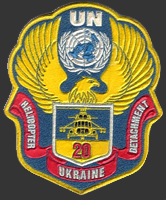
Another important (non-UN) contribution is Ukraine's support to Turkey. Since 1999, Ukraine every year deploys helicopters to Turkey during the fire-season, which runs from June to October. In 2004 some 10 helicopters once more flew all the way to Turkey to be dispersed over 10 different zones where they are used as aerial fire-fighters making use of their under slung bambi bucket having a maximum load of 3 tons of water. Although military owned, civilian pilots fly the helicopters, whereby the co-pilots and engineers detached to Turkey for the duration. The entire mission is overseen and administrated by the Ukrainian civil aviation company Rosavia. For some time now, Ukraine defence forces have undergone significant structural changes optimising its strength of force in accordance to the current balance of power, while transforming part of its military mission to that of peacekeeping. In this transformation process, Army Aviation already changed into a leaner and meaner organisation and has become increasingly important in effectuating these peacekeeping missions. Doing so with great success has allowed the Ukraine government to effectively engage and play its role it envisages in the international community. MIAS.Aero likes to thank the Ukrainian Ministry of Defence and the Ukrainian Army leadership for its support in preparing this article. MIAS.Aero 2004.
|
|
Website Design: Made|IN|Melon 2021© |